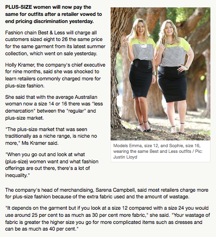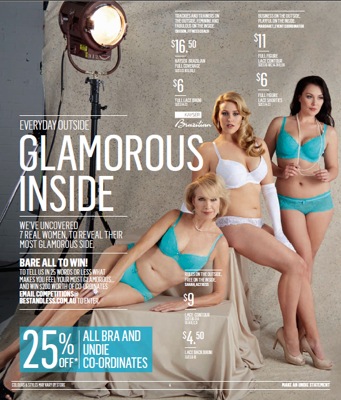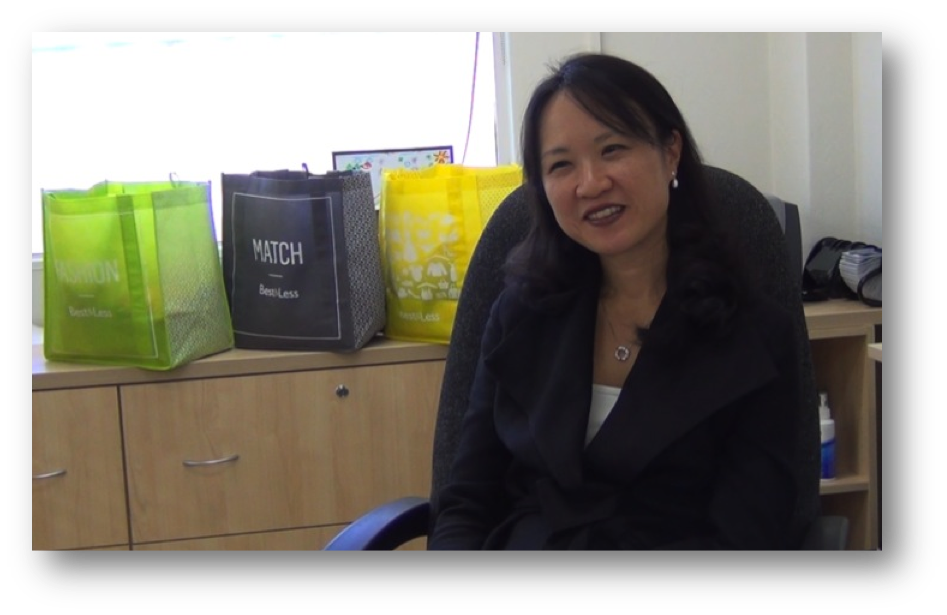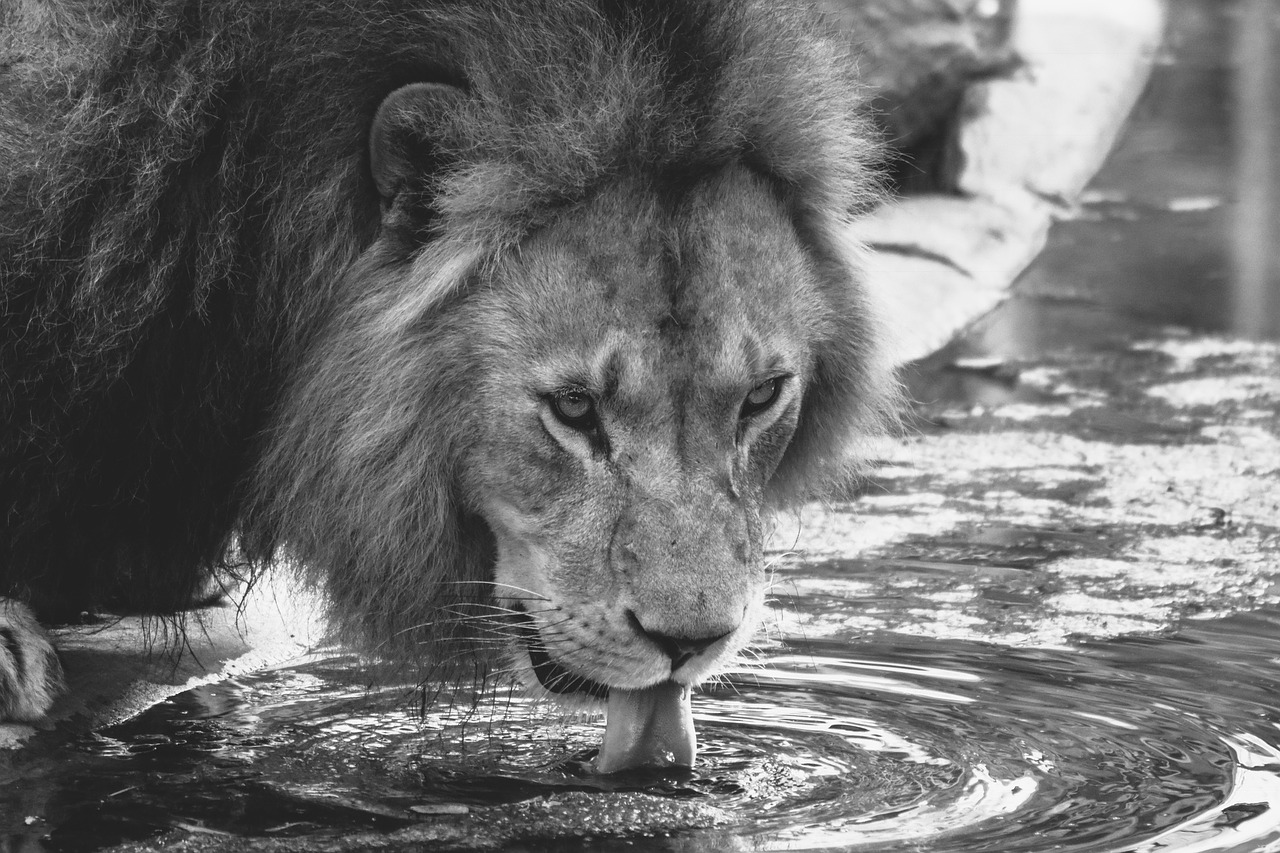Interview One: Jee Moon – Head of Marketing and Brand for Best & Less
March 5, 2014
Interview One: Jee Moon – Head of Marketing and Brand for Best & Less
Jee Moon is the Head of Brand and Marketing at Best&Less. She joined the business in February this year from Westpac where she was Director of Brand and Advertising. In her 5 years at Westpac she was responsible for revitalising Westpac’s brand strategy and visual identity as well as managing all of Westpac’s brand & retail advertising and the BTL communication. Before Westpac she was Head of Brand at Vodafone Australia.
Today working with Holly Kramer the CEO, Jee is bringing the Best&Less brand back to life. Having identified two great tribes of women, she is now working on the stores, the product and the whole customer experience. The key is to find the Best&Less hook that gives it meaning and resonates.
Part One – The Client
Thanks for spending some time with us Jee. Lets go back to Westpac before we move onto Best&Less. At Westpac, you did some amazing things. You’ve talked a little bit about building the Westpac brand. Tell us a couple of things about that experience?
‘It was amazing – the opportunity to work on an iconic Australian brand which was also going through a time of change. I joined when they had merged with St George bank and they were looking to maintain two brands. The strategy was to keep them as distinctive as possible to try to capture as much market share between the two of them as possible.
The St George brand, as a challenger brand, was quite well defined, the Westpac brand was not. And so the task was to help define the Westpac brand and then to take it out through the customer experience. So we did everything from people and sort of roles, and in particular the bank manager role, and then rolling it out to the actual branch experience, the branch design and therefore the customer experience, as well as obviously through the advertising and marketing’.
That’s interesting, so from a brand perspective what do you think your biggest lesson at Westpac, would have been? The one big thing you took away from that role?
A former CEO of mine was famed for rehashing a Forrest Gump quote as “A brand is, what a brand does.”
Once again, at Westpac, this was proven to be true. In turning around the brand, the marketing efforts were not just placed on advertising, but across the whole of the customer experience. For instance, one of the biggest and most successful marketing programs was Back the Banker Day – a day in which we took everyone out of the headquarters and into the branches, to symbolise our support for the the newly formed Bank Manager roles. Huge day, huge impact, because there were just great learnings both ways, by breaking down the silos between “the bank” and “the branch”. Huge boost in morale which then translated into improved service, and great customer engagement.
Even the advertising was around putting a name and a face to otherwise”faceless” bank. Ads at ATMs, metrolites, Direct Mail and digital display ads were personalised to show the name and mobile number of the closest Bank Manager. Bank Managers were also featured on TVCs. All this support for bank staff created a huge boost of morale for the teams, which created a domino effect resulting in great customer experience. So whilst ads alone are rarely successful in creating a change in brand perception, when ads lined up to actual experience in branch, we started creating a change in brand advocacy.
So that financial world must be vastly different to the retail world you are in now?
‘It’s a crazy world this retail world. It’s completely different in every regard from the last brand I was working on – I was helping to prepare Westpac to celebrate its 200th anniversary 4 years ahead of the date– here, we’d be lucky to have 4 days to turn around the next campaign!
In retail you have a great day one day and then the next day sales are down and you try to work out why. The difference between the steady, slow pace of the financial world, versus the high/low of retail is very stark. I’m still trying to get my head around it, but I can see why it’s so addictive!’
What kind of things are you putting in place to manage that change in pace? What do you think you’ll do differently as a marketing leader now, in this pacey world, versus the other world?
‘I think it’s not so much about what I’m doing differently, it’s more what I am trying to hold onto in this world of fast-paced change and brand transformation. Its about holding on to key marketing principles, knowing – really understanding and empathising with – the consumers. It’s about reminding myself of the things I do know, in and amidst the frenetic pace of retail.’
So are you talking about the frameworks that you would have learned through your experience of marketing?
‘Yes – it’s just knowing the basic truisms in marketing. For instance, the trusim of media multipliers and knowing that a campaign where you have the same message in several mediums is more effective than taking that same budget but then dividing it over six different campaigns.
It’s basics like that, which I need to instill, in a business that would rather see it spread over six things, because then it gives us six hits rather than the one. We need to prove that repeating one strong message is more effective than six smaller messages. The goal here is to improve the efficacy of what we are doing, rather than just do more of the same.
You’ve done some really interesting things here. One of the most interesting things was your democratisation of fashion. Tell us how that came about?
That was one of the first campaigns I worked on at Best&Less, and one to which I was proud to be associated.
The campaign sought to highlight and correct a discrimination that exists in fashion. Firstly, most designs that are available in Regular sizes don’t go into Plus, they get a smaller range and usually it’s quite different…. some would say not as fashionable. Secondly, is if the same design was available in Plus as in Regular, you’d be paying more for it as a plus size rather than a regular.
From a business perspective, plus sizes cost you more to manufacture because there is more fabric involved. In some cases it’s 50 per cent more fabric to create the larger sizes. So obviously, there’s a real cost reality behind the price differential. But we believe in making the thrill of affordable fashion available to everybody, regardless of size. So our commitment was that, where it’s appropriate and where the style suit, that we’d take the same fashion all the way through from 8 to 26 and that we would make them available at the one price.
So the campaign that we created was One Price Fits All. That is, one common price for the same garment, regardless of size. So everyone has equal access to affordable fashion, no matter what their size.

And you got a fair bit of press about it too, which was great.
Yes, we did. I think the biggest talking point was actually around the fact that there was this discrimination and that we were taking a stand for it. It has to be said that, before we went down that path, we had some concerns about being known as the Plus sized brand, but the amazing thing was that this message resonated with Regular sized customers as much as it did with Plus sizes. Because underlying the campaign is a message of fairness and equality, and there isn’t enough of it in the world of fashion, which too often discriminates on size, age and budget.
And you’re executing that kind of strategy in a number of your mediums. So your catalogues are about real women, your ads as well. What effect do you think that’s having on the brand?

‘Well I’d like to think that it’s giving our brand a point of difference by being driven by some principles and beliefs.
We’re not aiming to bring you the fastest fashion at the cheapest prices, but we’re goverened by a sense of trying to do the right thing. Because those of us that lead this business truly believe in that idea of democratising fashion – that fashion doesn’t have to be divided into these two extreme worlds of high fashion that’s highly exclusive, or the other end of it which is mass produced, at a really low quality – disposable fast fashion.
We believe there is something in between, that is still very fashionable and very affordable. And we’d like to think that we can bring about those two worlds.’
A couple of just last questions. Where do you get your inspiration from? So for the ideas that you have, where do they come from?
A lot of times they come from the world outside fashion. They come from the world outside retail. What I enjoy most in my roles in all the various brands I’ve worked on is being”The new girl.”The new girl to Banking, the newbie to Retail. But not having “grown up” in the world in which everyone else has been indoctrinated is where I derive my advantage, in my ability to see things differently. To borrow ideas from outside the category, and to challenge the conventions within.
The other day I was presenting at a meeting with People & Culture team on internal engagement, and my role was to stimulate new and creative ideas. To stimulate ideas within, we looked outside. Not just outside our company but outside our category, and at examples from a fast food sandwich chain in the UK, luxury hotel chain in Asia and an internet company. These were all companies that sit outside our world but they too deal with employee engagement, and sometimes a new idea is just one borrowed from a new place.’
If you had an opportunity to ask the real people two questions, what would they be?
‘I would take a group of people who had either never been into a Best & Less, or not been in it a long time in to Best & Less and show them the new products, the new store experience and the new service level – get their opinion on whether this is something that they are compelled by.
We’re making so many changes at the moment we are astounded by the rate of change ourselves, I just want to step back and get a view from the customer – do they notice – is it different?
And is it different in a way that’s compelling and positive and just have the sort of direct view from them, as opposed to our assumption of what we think their view might be. That would be the first question.
The second would be to turn the spotlight on our customers and the way in which they engage with brands. To look at an ethnography of their life and their shopping decisions and how they make their choices every day. You [Brandhook] have been talking to us about the perspective of Habits and it woul d be fascinating to see how much of their lives are driven by habit, versus points in their lives in which habits are broken and reset. And where what forms those disruptions comes in.’
Finally, what would be your advice to a new marketer, coming into the business? What would be the top things that you’d tell them to do?
I would tell them to be open, open minded. There is no such thing as the right educational background in marketing. Its about what you don’t know (and how you approach that) rather than what you do know.
To be curious and curious about people, first and foremost is important. If you are curious about people, you’ll find interesting, whether you’re selling them insurance or home loans or, even fashion.
And the third thing is just to have fun. I can’t think of a discipline where you’re surrounded by people that are as creative, as fun and as diverse as you are in marketing.
Great. Thank you, Jee.
Part Two – The Consumers
As part of our work with Best & Less, we are answering the above questions from Jee. What we thought would be interesting is to take the essence of the first question and ask our women a general question about how brands can disrupt a current habit and become part of their repertoire?
Pulling 18 women into our online forum, we probed on when was the last time they had changed brands and we asked about how this happened. What did they change from? What brand did they go to? What did the new brand do to get your attention? How did you notice them? We then asked for retail specific examples. This is what we heard.
Most of the women we spoke to had made a recent brand change ranging from mascara, porridge, nappies and cleaning products.
I recently changed my laundry washing powder. For the last 17 years I have used the powder stuff (like Surf) but it was really annoying when I washed the dark clothing. When I went to hang them on the line there was still some washing powder on them sometimes – I couldn’t figure out why or how!!! I recently changed to Radiant Laundry Gel – I absolutely love it!!! The clothes come out smelling fantastic – my family has all commented on it without me telling them I’d changed. And I never ever have to worry about any powder residue left on the clothing after washing.
I changed mascara brands from Rimmel to Avon and regret it. My mum actually recommended it to me so that is why I tried it.
I have also stopped buying Betts kids shoes as the last couple of shoes I bought scuffed and fell apart. I used to buy from there as the shoes seemed to last and fit really well, whereas I have not had good experience from them the last couple of times. So it wasn’t that another brand did anything it was more my current brand didn’t measure up.
It become clear that trying and adding new brands to their current repertoire was occurring in our ladies lives and new habits were being formed. So next we asked what were the main ways brands can cause disruption and there were five clear themes:
- A recommendation from an ‘expert’. A lot of ladies talked about a friend who suggested they try a particular product but the key was that these were respected ‘experts’ in their field. That may be a girlfriend, a daughter or a colleague who has her own fashion credentials or an acquaintance who works in beauty.
- Bringing the instore to life. When we probed on retail experience, our ladies talked about what is happening in store can grab their attention. Great window displays, lively fashion parades and a stylist in store were all things that would awaken our ladies into consciousness.
- Promotional ideas. A great promotion will pull people out of their autopilot behaviors. We heard about special tins for breakfast cereals, photo opportunities with mates, price calculator to work out per wash price, samples and freebies, ladies nights The key to these promotional ideas working is based on the usefulness and intuitive nature of the promotion. If the idea is solving a real problem and is easy to fit into their current routine, then the promotion will be appealing.
- An ‘in-your-face approach’. All our ladies spoke about being pulled into store with clever and timely direct marketing activity like catalogues, emails and even in-shopping centre adverts.
- A bad customer experience. Apart from competitors disrupting others habits, brands themselves can disrupt their own habits. Think Apple with the iPhone 5 and its new cord adaptor. Our ladies told us that a bad customer experience will turn them off a brand – lack of space, rude staff or hard to shop environments are amongst the things discussed as triggers to put them off.
In his book The Habit Loop Charles Duhigg summaries the triggers to disruption into five categories that cues and fall into:
- Preceding action
- Another person
- Emotion
- Time
- Location
The key is to lock in this switching of behaviour with a reward that reinforces the new habit. But that is in the next conversation.


